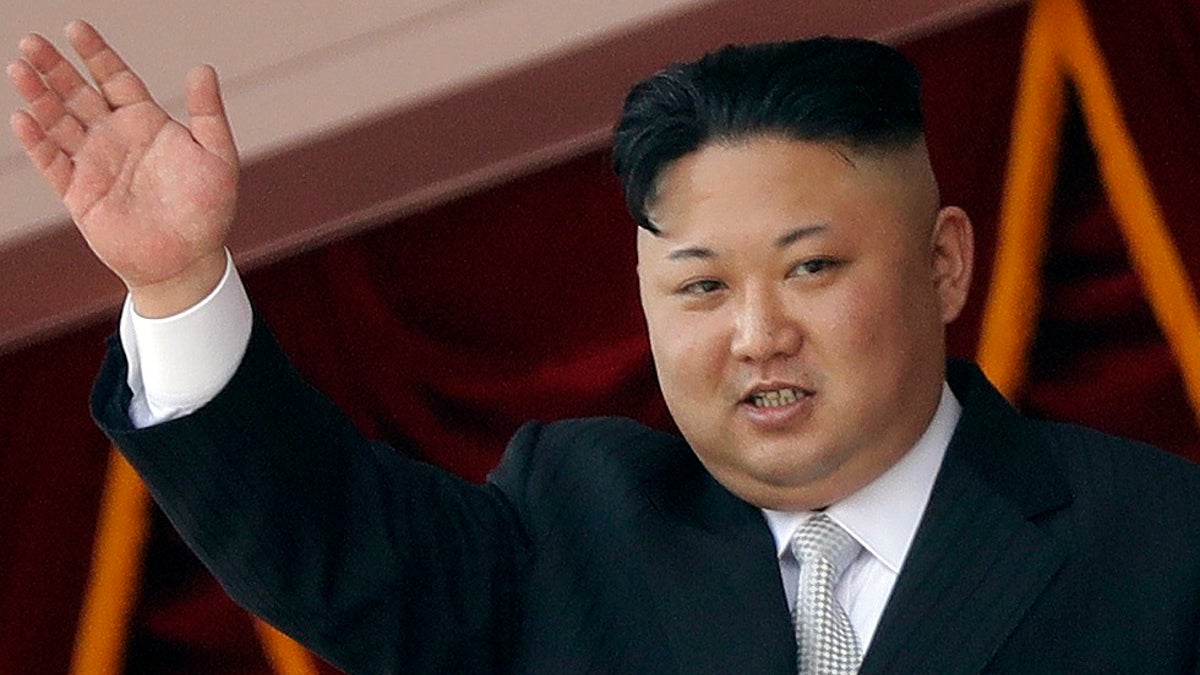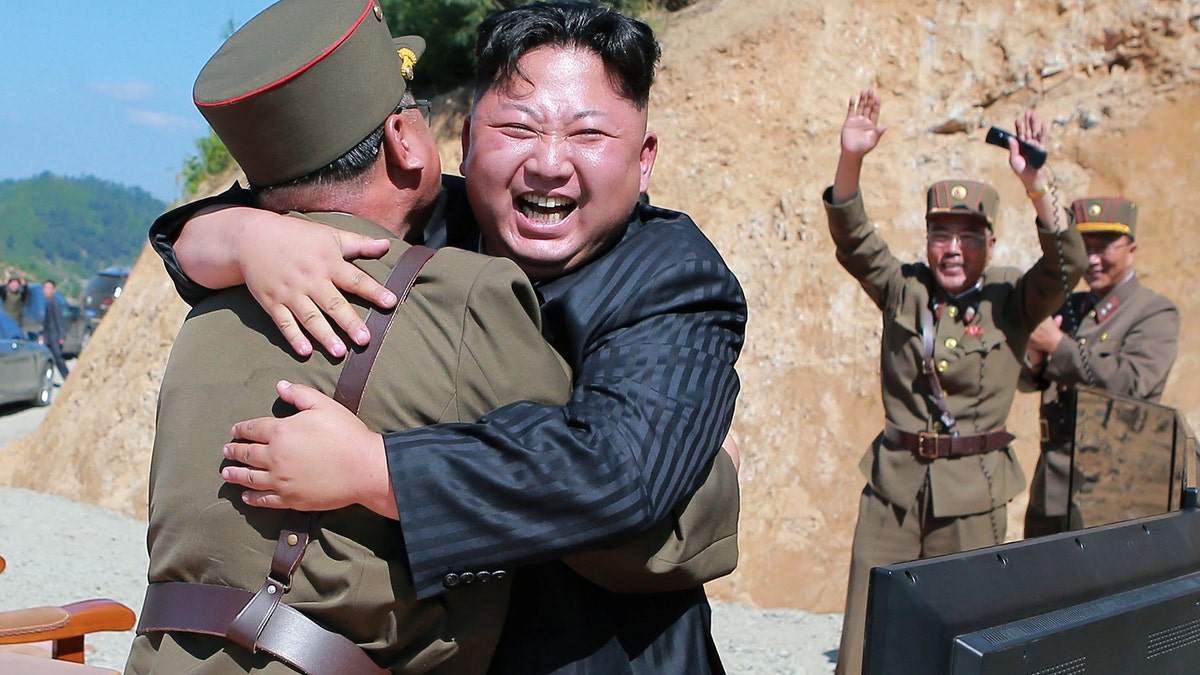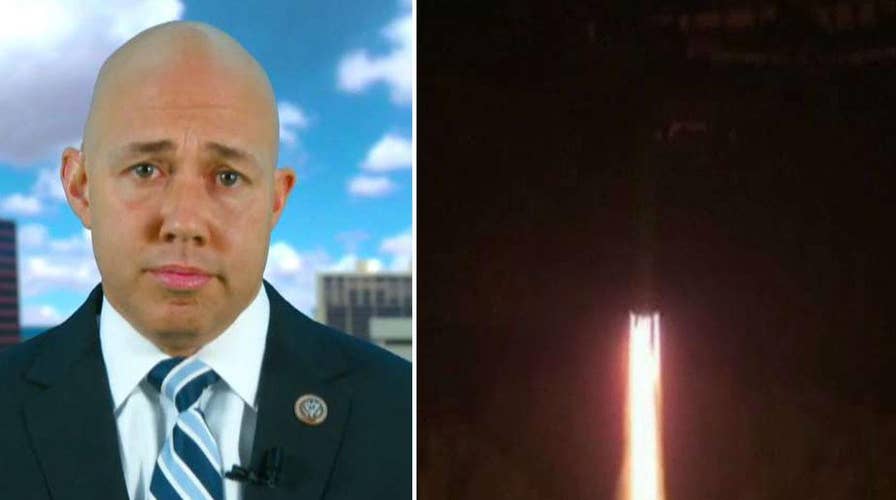Rep. Mast: We should show NKorea our missile defense works
U.S. responds to North Korea's second ICBM test
The Pentagon on Monday said North Korea's latest intercontinental ballistic missile test was the longest such test in the history of the rogue regime.
While many specifics of the North Korean ICBM launch remain classified, Pentagon spokesman Capt. Jeff Davis said the North Korean flight on Friday was the dictatorship's most advanced attempt so far.

North Korean leader Kim John Un waves during a public appearance. (AP)
When asked by Fox News if it was the longest in history, Davis would only reply with a terse, “Yes.”
The North Korean missile flew for about 45 minutes -- five minutes longer than what the Pentagon now calls the KN-20 ICBM, which was launched July 4. Officials believe the same type of missile was launched Friday.
Missile experts calculated that the North Korean ICBM launched on Friday flew 2,300 miles into space, about 600 miles higher than the July 4 ICBM flew.

North Korean leader Kim Jong Un hugs a member of the military after a successful intercontinental ballistic missile test flight. (Reuters)
Sen. Dianne Feinstein, D-Calif., said on "Face The Nation" on Sunday that North Korea could have half of the U.S in its range at this point.
Based on briefings, intelligence reports and committee testimony, Feinstein said she's "convinced that North Korea has never moved at the speed that this leader has to develop an ICBM to put solid fuel, to have an interesting launch device, and to have a trajectory which, as of the latest analysis, would enable it to go about 6,000 miles and maybe even hit as far east as Chicago."
While Davis did not read out any specific dangers to merchant shipping and airlines, he reiterated the warnings after the July 4 test that North Korea does not coordinate these launches with anyone, which puts ships and aircraft at risk.
Davis admitted the USAF B-1 "show of strength" flights were “previously scheduled” before the ICBM test, but moved up a day after the long-range missile test.

North Korean leader Kim Jong Un watches the test flight of an intercontinental ballistic missile. (AP)
“They are designed to demonstrate our alliance capability,” Davis said. “To be able to rapidly deploy very significant firepower to the [Korean] peninsula in a short period of time.”
Davis also said the THAAD missile defense test Sunday was “previously scheduled,” as well. The THAAD test and B-1 flights were scheduled in June.
The U.S.-South Korean armies' launch of short-range missiles Friday night, however, were a direct result of the ICBM test, Davis said.

